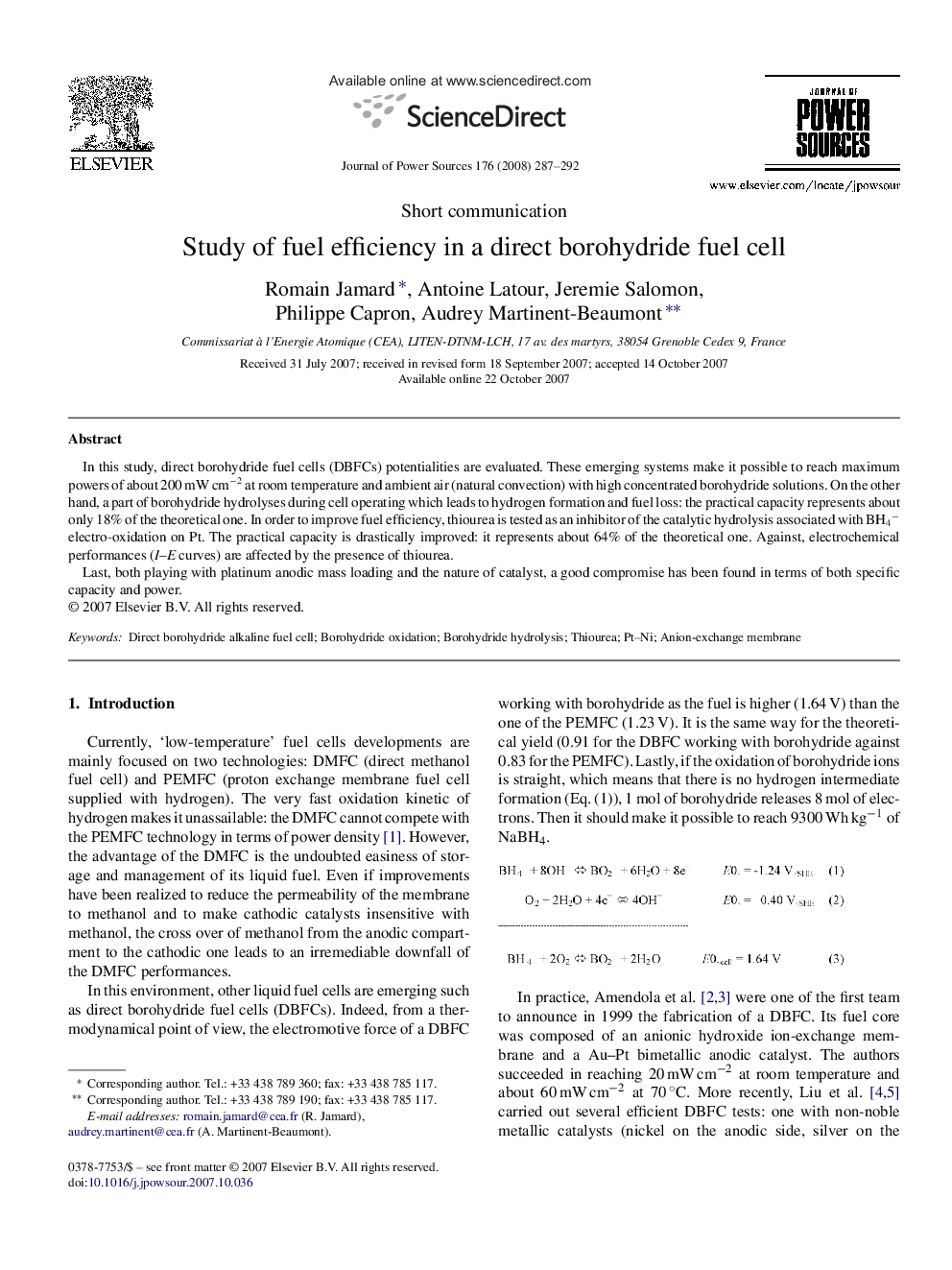| Article ID | Journal | Published Year | Pages | File Type |
|---|---|---|---|---|
| 1285896 | Journal of Power Sources | 2008 | 6 Pages |
In this study, direct borohydride fuel cells (DBFCs) potentialities are evaluated. These emerging systems make it possible to reach maximum powers of about 200 mW cm−2 at room temperature and ambient air (natural convection) with high concentrated borohydride solutions. On the other hand, a part of borohydride hydrolyses during cell operating which leads to hydrogen formation and fuel loss: the practical capacity represents about only 18% of the theoretical one. In order to improve fuel efficiency, thiourea is tested as an inhibitor of the catalytic hydrolysis associated with BH4− electro-oxidation on Pt. The practical capacity is drastically improved: it represents about 64% of the theoretical one. Against, electrochemical performances (I–E curves) are affected by the presence of thiourea.Last, both playing with platinum anodic mass loading and the nature of catalyst, a good compromise has been found in terms of both specific capacity and power.
